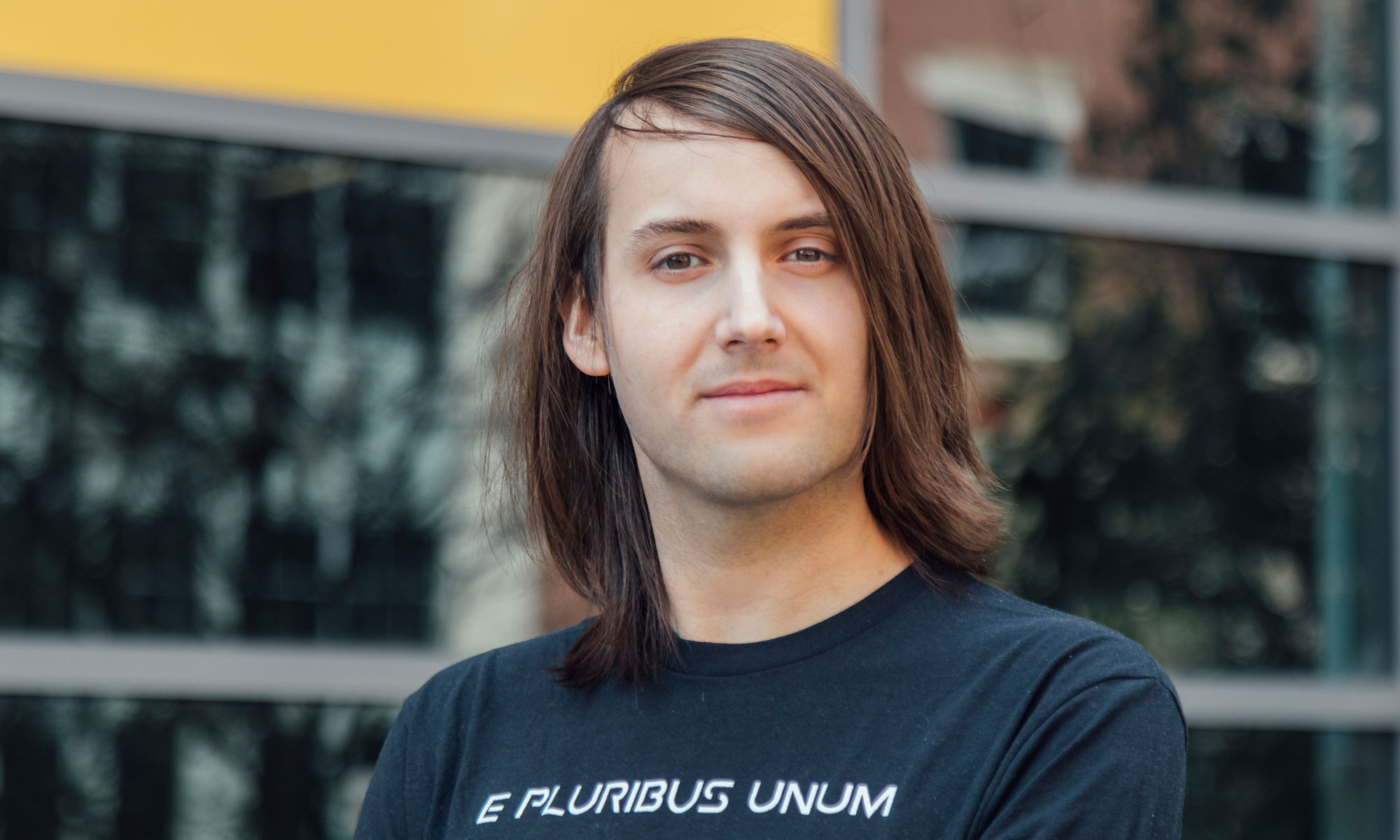James Vulcanoff, a mechanical and nuclear engineering graduate student, wants to improve power production efficiency in the realm of renewable energy. Their work using computational fluid dynamics will be featured at the Virginia Commonwealth University (VCU) College of Engineering’s Research Showcase on April 10, where graduate students like Vulcanoff will share insights and present posters to engineering colleagues, industry leaders and academic peers.
“The focus of much of my research has been two major projects,” Vulcanoff said, “rifled pipes for use in molten salt systems and thermal energy storage tanks for solar salt systems.”
Concentrated solar farms focus the sun’s energy to a single point, using heat to create molten salt. In liquid form, salt acts like water and can be used at higher temperatures, which means better efficiency. Running molten salt through a pipe with water on the outside turns the water into pressurized steam. The resultant steam can be used to spin turbine blades and create electricity more efficiently than existing technology.
“Optimizing the molten salt’s flow to effectively transfer its thermal energy is crucial for efficiency,” Vulcanoff said. “In my first project, I run computational simulations that test different rifled pipe designs.”
Rifled pipes use geometric surfaces within the pipe to create centrifugal forces in the mass flow. This separates the fluid from the steam component and forces the fluid towards the tube wall, creating vortices and improving fluid mixtures. Vulcanoff simulates the molten salts within the pipe by applying a heat flux to the walls. The goal is to distribute heat evenly through the pipe using the unique rifled pipe geometries.
“We analyze the penalties to the fluid system from the pressure drop as it cools over time. These penalties and our subsequent improvements to heat transfer are reflected in the Nusselt number, a value that characterizes heat transfer from a fluid. By comparing numbers between a standard pipe and our rifled pipe with the same hydraulic diameter, we’re able to access the thermal performance factor.”
Vulcanoff’s second project involves nozzle inlets that inject molten salt into a tank for the storage of thermal energy. They quantify the thermocline of fluid within a storage tank, which is the temperature gradient between the liquid’s hot and cold layers.
“I run computational simulations that test different nozzle inlet configurations,” said Vulcanoff. “By ensuring the best position and angle of injection for the nozzles that deliver molten salt, we retain more heat and make the power system more efficient. We take the temperature in the center of the tank, which should be half its maximum temperature. The slope of the resulting temperature curve is measured and we’re able to determine the efficiency of the tank design and its capacity to be ‘charged’ with heated fluid.”
After a project involving thermal piping for a molten salt nuclear reactor, Vulcanoff chose this research into solar energy because it employed his existing knowledge of rifled pipes. “I’d already worked with helically rifled pipes that induced swirling molten salt to more effectively transfer heat further into the pipe without adding mechanical complexity such as pumps or motors,” Vulcanoff said. “This project was similar, I wanted to improve heat transfer using geometric modification, but in the realm of renewable solar energy.”
Lane Carasik, Ph.D., mechanical and nuclear engineering assistant professor, advised Vulcanoff during their research. “Dr. Carasik had a large impact on how I see research and work as a whole,” Vulcanoff said. “After completing my undergraduate degree, I worked in industry for a bit before deciding to pursue graduate work. The kindness Dr. Carasik showed me and his willingness to listen and guide me through my career shift from physics to mechanical and nuclear engineering had a profound influence on my life.”
Hailing from Henrico County, part of the Greater Richmond area, Vulcanoff is a local who became interested in VCU’s growing nuclear program. “VCU Engineering has done a lot to help me with making connections and collaborating with industry professionals,” Vulcanoff said. “Whether through internships with groups like Argonne National Laboratory or collaborations with Idaho National Laboratory in regards to high performance computing work, I received many opportunities to advance my education and career.”
Vulcanoff’s research poster will be on display with more than 60 other graduate students during the College of Engineering’s Research Showcase on April 10 at the Engineering Research Building on 401 W. Cary St. The event takes place during VCU’s Research Weeks, which celebrates VCU’s groundbreaking discoveries and continued quest to lift lives and improve the human condition.
The Department of Mechanical and Nuclear Engineering provides undergraduate and graduate students with the opportunity to perform real-world research as soon as they enroll. Formed from a partnership with Dominion Energy, the department provides a foundation in nuclear energy, allowing students to choose their educational path with advanced coursework in either mechanical or nuclear engineering. Access to industry tools, like the Nuclear Reactor Simulator Laboratory, grounds education in practical instruction. Browse videos and recent news from the Department of Mechanical and Nuclear Engineering to discover how the College of Engineering at Virginia Commonwealth University prepares the next generation of scientists and engineers for the challenges of the future.
